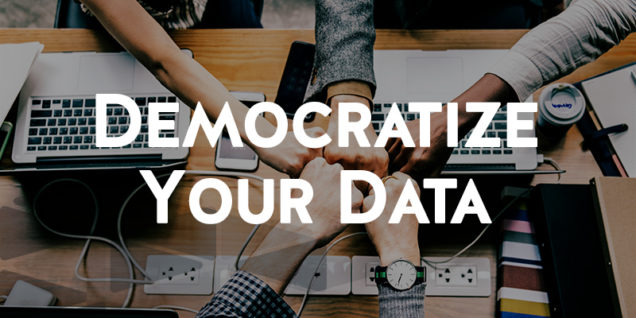Housing untapped, raw data does little but expend additional storage and security resources. But, at the same time, accessing that data for active use is hard.
Because of this, many companies have started working through their database administrators (DBAs) to try to get more from their data. However, as is the current trend, organizations are working off of leaner IT teams with generalized workforces rather than maintaining large numbers of singularly-specialized engineers. Some companies may only have one or two DBAs to manage their entire database infrastructure.
As a result, working solely through a DBA for your analytics has some considerable downsides.
The DBA Bottleneck
Each manual query made by your various departments takes a considerable amount of time to run and analyze.
Before long, a ticket queue develops, and not only is your DBA overwhelmed, your marketing team—who needs to know yesterday how many sales they assisted in Q3 in in the South East—is facing a considerable wait time before they can act on the data reports. They know all too well that trends wait for no one, and analytical conclusions provided weeks after a (predictable) market fluctuation are useless.
And what happens when, in their rush, your DBA grabs the wrong data set? Or your team accidentally asks for profit in the scenario above when they actually meant revenue? Any inconsistencies like these require the process to be started all over again, and your team waits once again at the back of the analytics line. It’s not a sustainable solution to leave your analytical data mining at the mercy of a highly limited human resource. Your database administrator is doing all that they can. But your marketing teams are tired of that growing queue outside the DBA office door.
Most importantly, remember that a DBA’s primary function is to maintain the database, not to mine it.
Yes, DBAs are responsible for the data, and because of that proximity, they happen to know it best—and traditionally, they have been made accountable for the reporting side as well. However, if a better system can be implemented, then your DBA should be allowed to focus their efforts on managing and securing the system, not on being a human reporting tool.
Perhaps you’ve already implemented a variety of analytics tools to gather data. HPE offers the excellent Nimble Storage platform that provide predictive data analytics, but the scope is limited to your storage devices. Or maybe you’ve recently implemented an IoT or IIOT strategy. There again, Aruba with help your securely deploy and maintain uptime for your devices, but the data itself is still locked into a database.
What if it were possible for you to bypass those long lines and access the trend data yourself? No more queues. No more relying on harried DBAs. No more week-long wait times. How about just a simple click and you’ve got what you need?
Qlik democratizes your company’s analytical data.
Access and Visibility
No longer must you be an IT guru or a data scientist to access your company’s data stores; Qlik provides a self-service, intuitive dashboard that delivers data visualization, guided analytics applications, and embedded analytics reporting to any user (that you allow), regardless of their technological background or experience.
Qlik removes chronic data-blindness and provides, instead, a mechanism for organizations to “see the whole story that lives within their data.” This advanced analytical platform combines any number of data points, across any number of industries, to produce interactive, customizable smart visualizations of the once-raw and inaccessible data stream. Rather than requiring direct SQL queries, Qlik provides an intuitive GUI interface that facilitates collaborative efforts between your IT team and your business units.
Qlik Revolutionizes Analytics Processes
With Qlik deployed across your networks, it no longer falls directly on the shoulders of your DBAs to provide analytical reports. Qlik streamlines your once-fraught system by delivering the analytics directly to the people who need to decide where the company goes next. No longer do you wait weeks for an answer. Your analytics are now available with the click of a button.
Qlik is highly customizable to the needs of your company, so, your IT team will need to be a part of the initial setup and configuration (and for any future augmentations or additions of new data sources). Together, you and your DBA decide what data the Qlik dashboard should synthesize and display, whether it be:
- Trend analysis for sales
- Seasonal product demand
- Inventory predictions
- Generic website traffic, etc.
The end goal is to allow both user and admin access directly at the BU level so that your IT team—and your overly-busy DBA—can get back to what they do best: maintaining your IT systems.
Bigger Pictures and Relieved DBAs
Because Qlik gives end-users a “big picture” view of their data, companies have been able to make serendipitous discoveries that even their DBAs wouldn’t have known to look for. This allows for more effective data mining and market trend discovery. Qlik’s comprehensive platforms also allow for more complete troubleshooting of the database itself as its algorithms will alert you when data is missing or not being collected properly (whether it be user-error or a malfunctioning sensor).
In short, Qlik makes your data more readily accessible, giving you back the ultimate power as decision-maker. Rather than remain at the mercy of your DBA’s work schedule, make real-time decisions based on actionable information that you access and draw for yourself through Qlik.

